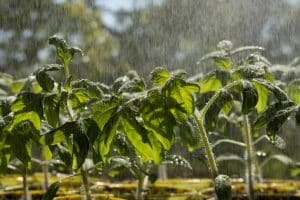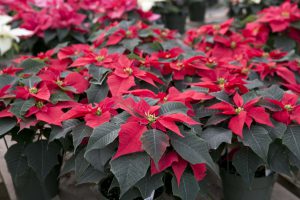
For the Love of Hostas
by Rob Sproule
I’ve come to learn that those who love hostas, love them a lot, and those who don’t love hostas.. still like them quite a bit. They’re one of Canada’s favourite perennials for 3 good reasons: they’re low maintenance, totally rock in the shade, and have more elegance in one leaf than most perennials have in their whole plant.
Native to the Far East from eastern Russia to Japan, hostas were brought to Europe in the 1700s and became instant ornamental favourites. Today there are almost 3000 cultivars registered (and who-knows how many unregistered). For a plant grown solely for its foliage, there’s an extraordinary range of sizes, shapes, colours, and textures.
Growing Hostas
Sometimes, when we hear of a shade plant, we get overexcited. Hostas are not actually shade “loving”; they are shade “tolerant.” It’s semantics, but the crucial detail is that they need more sun than we think.
Hostas grow in full sun in their native east Asia, where the sun is tempered by the humidity. In Canada, Western regions (with dry, parching sun) need to shelter their lush leaves in the afternoon.
The lighter colour the foliage is, the more sun your hosta needs. Deep, dark foliage keeps its colour best in more shade while variegated types need more sun to keep crisp contrast. More sun and/or highly dappled sun (with a mature tree on their southern side) is ideal.
Dig a wide hole in rich soil (amend with compost if its dusty) that’s slightly acidic. Fertilize with an all-purpose in the spring. Summer fertilizing is a bonus for them but not necessary. When fertilizing, make sure you don’t leave any granular pellets on their leaves or they’re burn holes.
Depending on the variety, hostas take 4-8 years to fully mature. They’re tolerant of light summer drought once mature but, until they are, keep the roots moist. Make sure your area has good drainage, however (ie. No puddles that won’t go away after a rain) or the crown may rot.
Trouble-Shooting
It’s hard to resist the allure of a lush, mature hosta bed, for humans or pretty much anything else. As hostas connoisseurs will tell, the battle against leaf devouring slugs can escalate from annoyance to epic very quickly.
Mature plants (which have thicker leaves) are more slug resistant than the babies. Coarse wood mulch will help deter slugs (as well as balance the soil moisture). If all else fails, a margarine lid full of beer will bring down the slug numbers.
Deer loves hostas, too. If you’re out in the county, plant narcissus / daffodils around and amongst your hostas. They’re so toxic that deer won’t go near the the emerging shoots in the spring.
From animals who eat it to animals who shouldn’t, it’s important to note that hostas are toxic to dogs, cats, and horses due to a chemical called saponin. If your dog gets into the hostas you can expect bloating and general depression. Get him to a vet, especially if he doesn’t start vomiting and experiencing diarrhea, which could indicate that he can’t get it out of his system. incidents are fairly rare.















